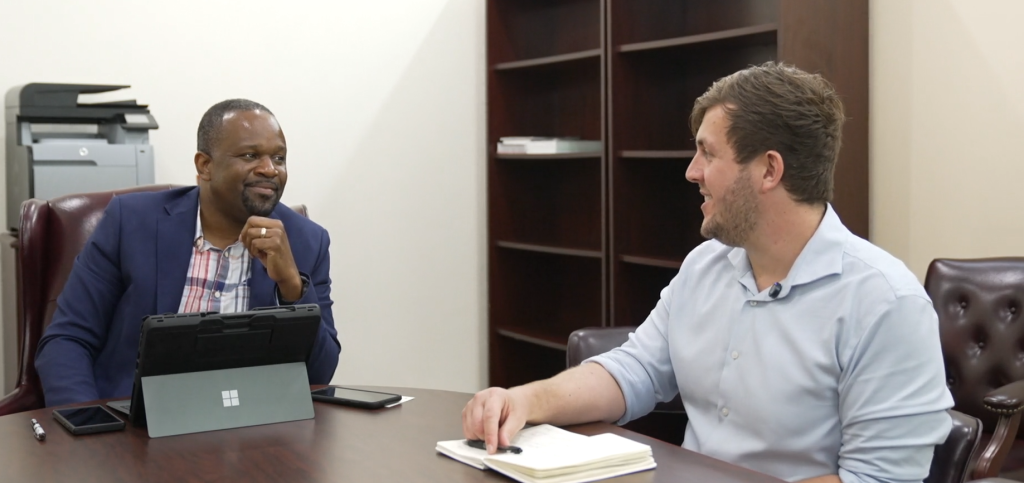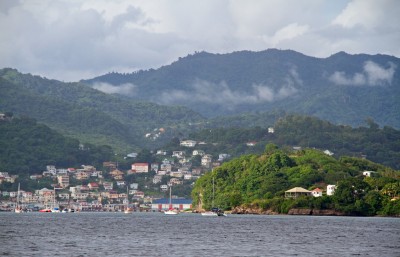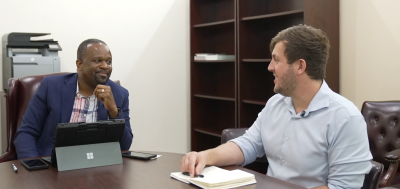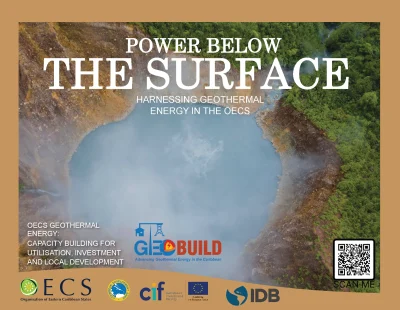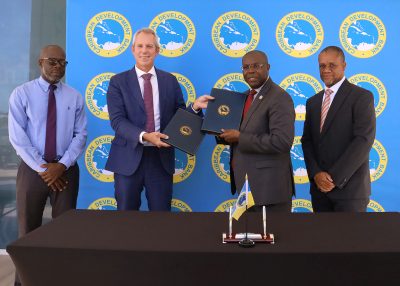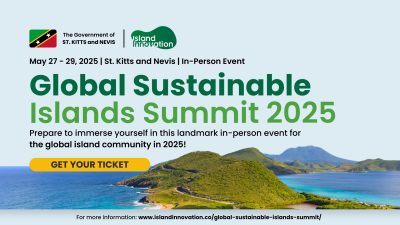St Kitts and Nevis: Islands leading big changes in renewable energy
Developing a geothermal power project has been a transformative process for St. Kitts and Nevis, setting it on a path to being a fully sustainable island state.
As part of the buildup to this year’s Global Sustainable Islands Summit 2025, James Ellsmoor, CEO of Island Innovation, did an interview with Hon. Konris Maynard of the Government of St. Kitts and Nevis. The insights from that conversation have been published below.
The Caribbean twin-island Federation of St. Kitts and Nevis is embarking on an ambitious journey that could transform it into the Western Hemisphere’s first fully sustainable independent nation. During a recent conversation with Hon. Konris Maynard, Minister of Public Infrastructure, Energy, Utilities, and ICT, I gained valuable insights into how this small nation is tackling large energy challenges through innovative approaches to geothermal development.
Energy: the central tool for sustainable economic development
For Small Island Developing States (SIDS), energy isn’t just about keeping the lights on—it’s the foundation upon which all economic development rests. Minister Konris Maynard emphasised how the current high energy costs are significantly impacting the Federation’s economy, with the government currently subsidising residential electricity costs through the Fuel Variation Charge to shield consumers from the full burden of escalating global fuel prices.
This subsidy, while necessary in the short term, represents a substantial fiscal challenge apparent across many SIDS that diverts resources from other critical development areas. The economic implications extend beyond household budgets, as high energy costs also deter energy-intensive industries from establishing operations in the Federation, limiting economic diversification and employment opportunities.
The government’s push toward renewable energy, particularly geothermal, represents a strategic shift away from this previous model toward one that promises both economic and environmental benefits.
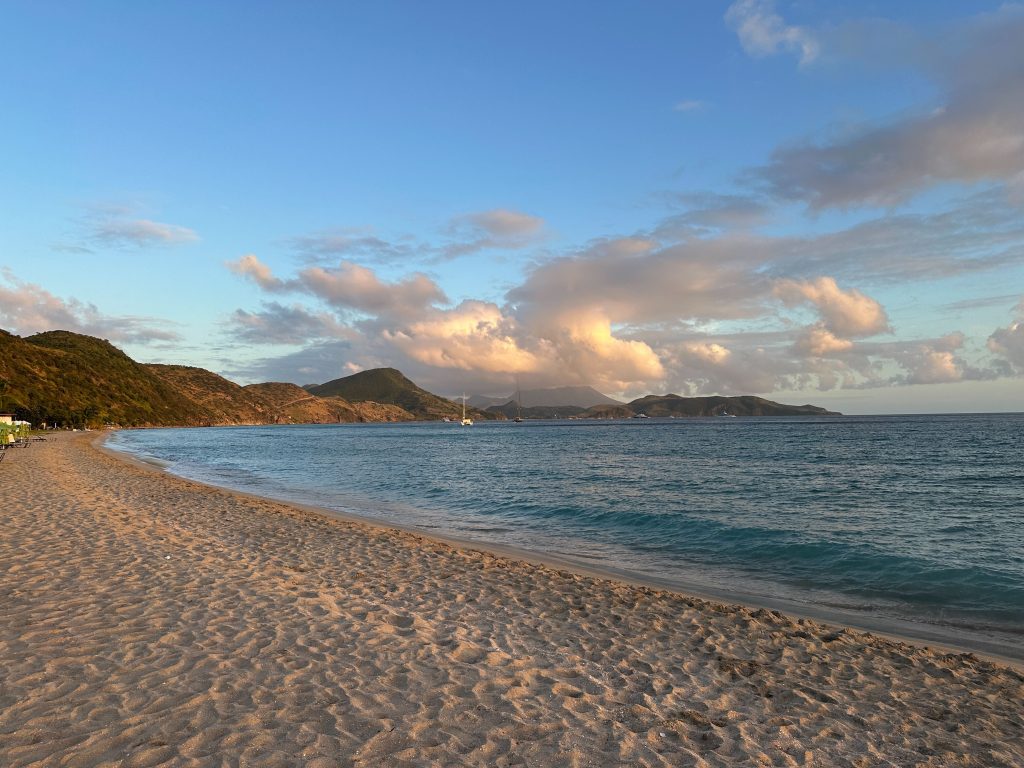
Geothermal: a game-changing resource
Saint Kitts & Nevis possesses distinct advantages for geothermal development that make it particularly promising. As Minister Maynard explained, “The heat amount is much closer to the surface than in other areas of the world, so you don’t have to drill as deep to get to it.” This geological advantage significantly reduces exploration and development costs.
The journey toward harnessing this resource has been complex, involving multiple administrations and financial institutions. The current breakthrough came through a financing structure from the Caribbean Development Bank (CDB) called a “contingently recoverable grant facility,” providing $17 million USD—$16 million for drilling and $1 million for technical support. The innovative risk-sharing mechanism converts to a concessionary loan if drilling succeeds or a grant if it fails, thereby reducing the financial risk for the Federation.
However, this funding alone wasn’t sufficient to attract top-tier drilling companies to the project. Minister Maynard noted that the $16 million would only fund approximately three wells, making it challenging to entice global drilling experts to mobilise for such a limited scope. The solution came through additional financing of $20 million from the Saudi Fund for Development, bringing the total available funding to $36 million—enough to drill five wells (three production wells and two reinjection wells).
Perhaps equally important was resolving the long-standing political challenge between the federal government and the Nevis Island Administration (NIA). The current administration took a decisive step by passing a resolution in the National Assembly declaring geothermal resources on Nevis a federal asset that will receive federal support. This political alignment between the two administrations sends a clear signal to international partners about the Federation’s united commitment to the SKNICE – St. Kitts and Nevis Islands Climate Enhancement Project, for the benefit of all citizens of St. Kitts and Nevis.

Connecting the islands: one electrical grid
One of the most transformative aspects of the geothermal development plan is the potential to create a unified electrical grid connecting St. Kitts and Nevis. Minister Maynard highlighted how this interconnection would allow industries on either island to benefit from renewable energy resources developed on either island, creating a more resilient and flexible energy ecosystem.
“With geothermal, it justifies interconnecting the two islands. St. Kitts and Nevis then becomes one electrical grid, so any industry developed on St. Kitts or Nevis will be able to share any renewable energy resource on either island,” explained Minister Maynard.
This approach maximises the utility of renewable resources across the Federation and creates a more attractive environment for industries that require reliable, affordable electricity. The unified grid represents a physical manifestation of the political collaboration now taking place between the federal government and the Nevis Island Administration.
Beyond self-sufficiency: becoming a net energy exporter
Perhaps the most ambitious aspect of St. Kitts and Nevis’ energy vision is the potential to move beyond self-sufficiency to become a net energy exporter to neighboring islands. With initial estimates suggesting the geothermal wells could produce between 5-10 megawatts each—potentially yielding 15-30 megawatts—the Federation could generate more electricity than it currently needs.
Minister Maynard envisions two potential avenues for this surplus energy. First, direct electricity export through undersea cables to nearby islands. Having personally visited Mallorca and witnessed its 250km undersea interconnection with Spain, the Minister noted that Antigua is just 60km away and St. Martin approximately 50km—making such connections technically feasible.
Second, using surplus energy for what energy experts call “Power-to-X” applications—converting electricity into other valuable products like hydrogen or ammonia. This approach could create new industries and export opportunities beyond simply selling electricity.
“With this vast resource of geothermal, it opens up industries but also justifies interconnecting with other islands,” said Minister Maynard. “Right here in the Caribbean, we can be a beacon of energy that interconnects with these islands.”
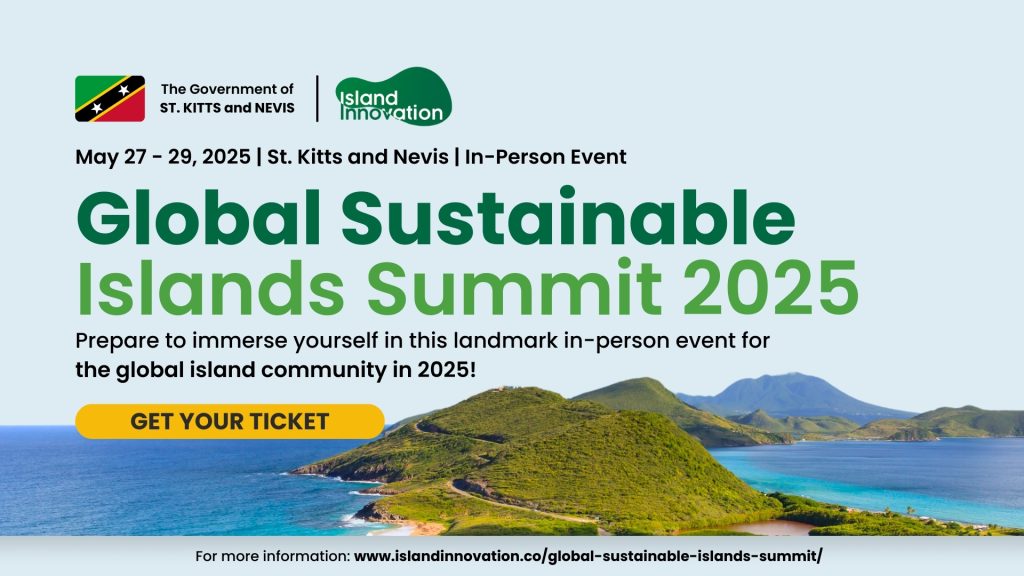
Becoming part of History
As St. Kitts and Nevis prepares to host the Global Sustainable Islands Summit 2025 and the Geothermal Energy Forum, Minister Maynard extended an invitation to renewable energy stakeholders worldwide to participate in these events.
“This is an opportunity to be part of history,” he emphasised. “We are on a path to make St. Kitts and Nevis the first fully sustainable island state in the Western hemisphere and perhaps even the world.”
The Minister’s closing observation captures the essence of what makes this small nation’s approach to energy so compelling:
“St. Kitts and Nevis is small enough to make big changes.”
The Federation is demonstrating how opposing political parties can align behind a shared vision of sustainability, and how a nation with limited resources can leverage strategic partnerships to undertake transformative energy projects.
For those interested in renewable energy development, particularly in island contexts, the upcoming Global Sustainable Islands Summit in May 2025 presents a unique opportunity to witness this ambitious vision taking shape and to explore partnership opportunities in what promises to be a showcase for sustainable island development.
For more insights from the interview with Hon. Konris Maynard, check out the video below:
